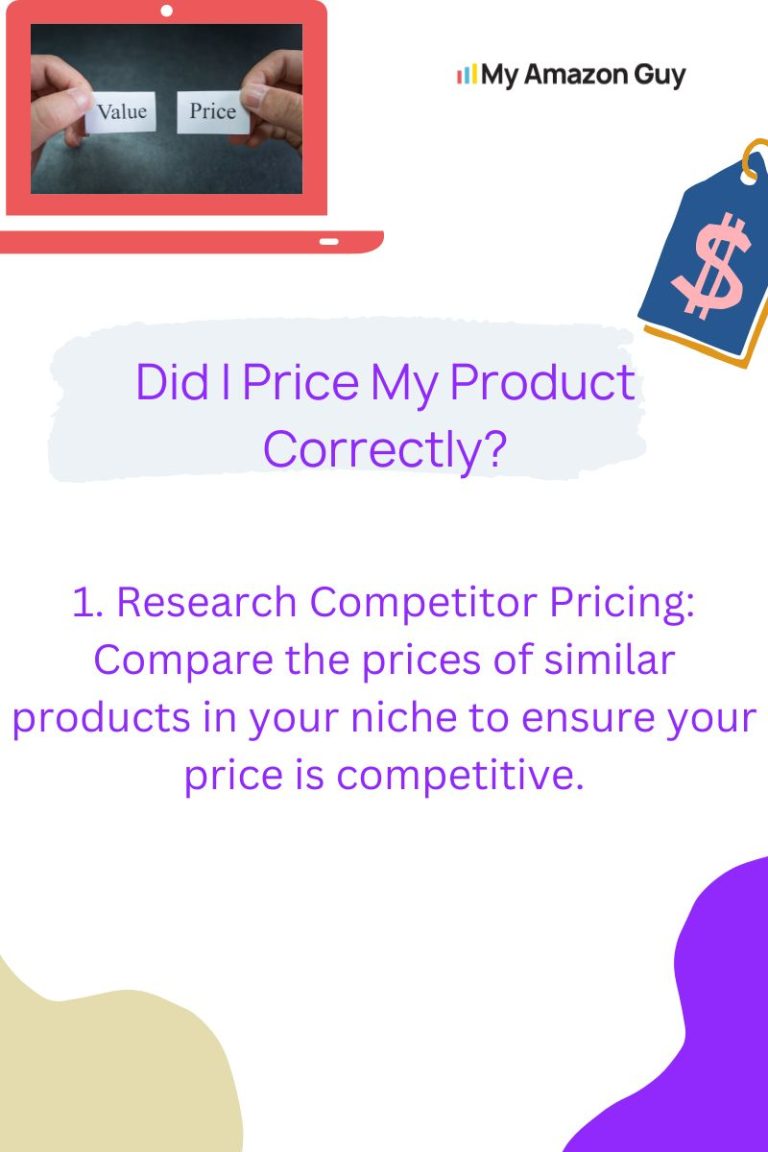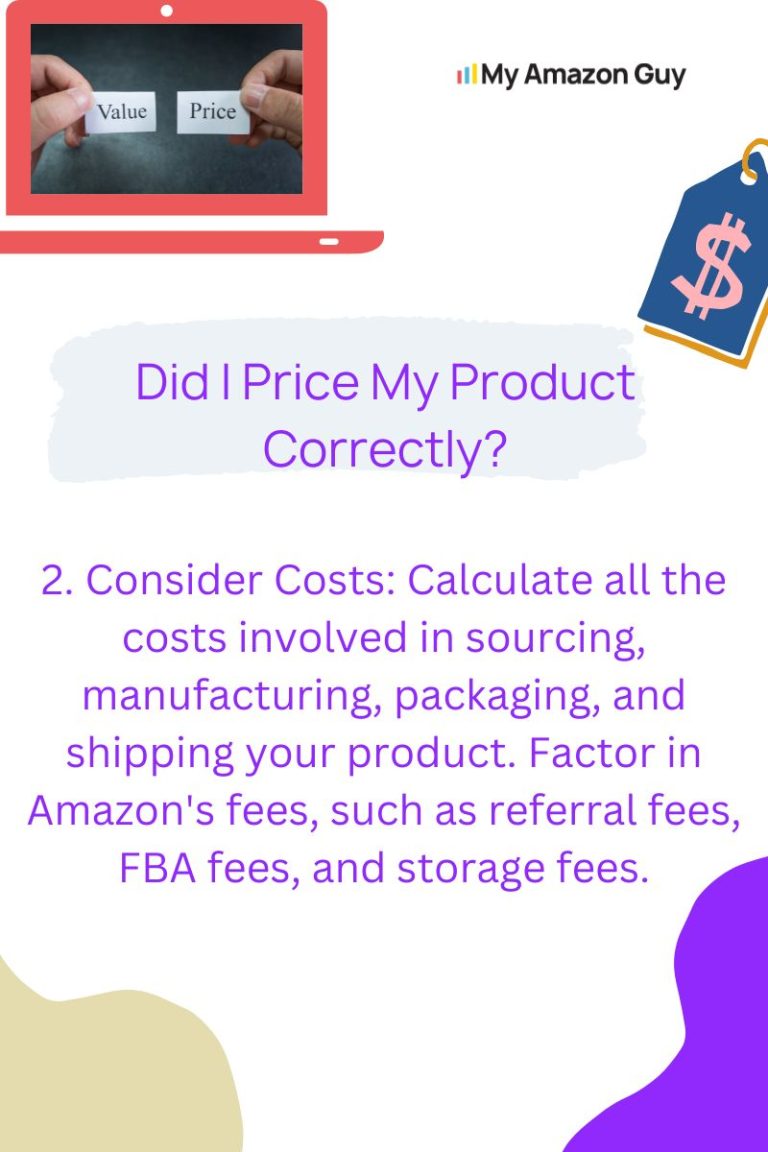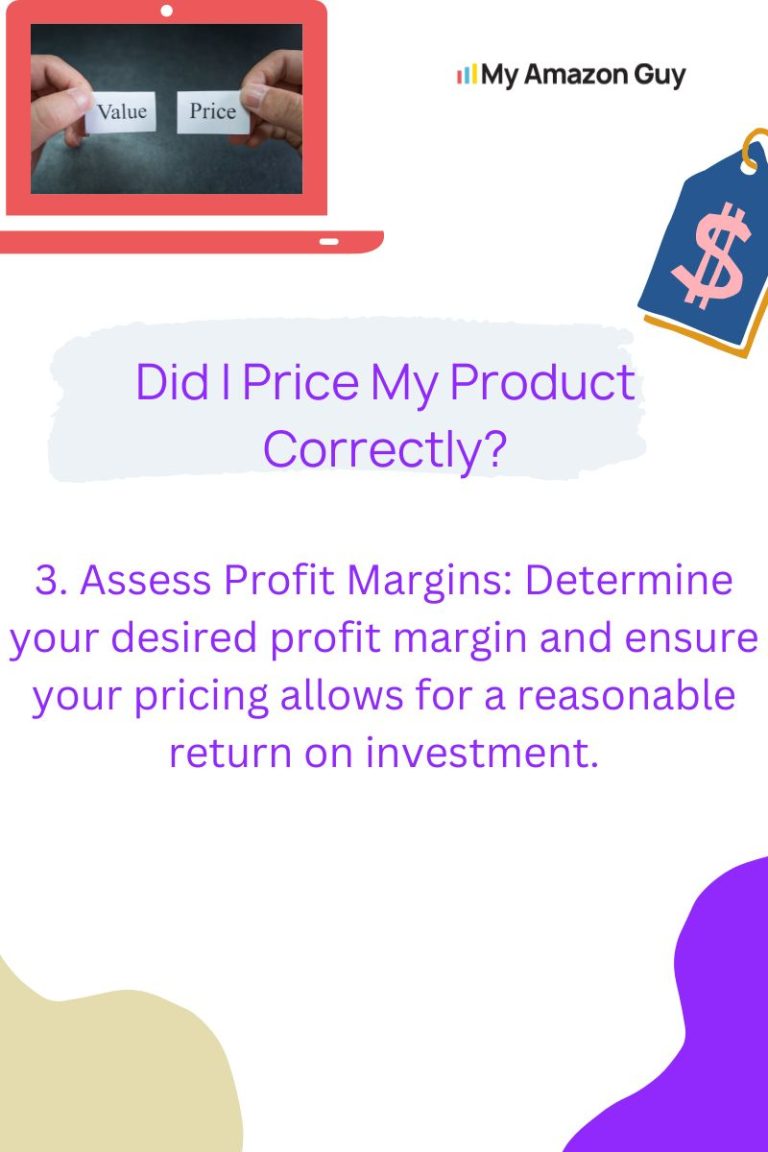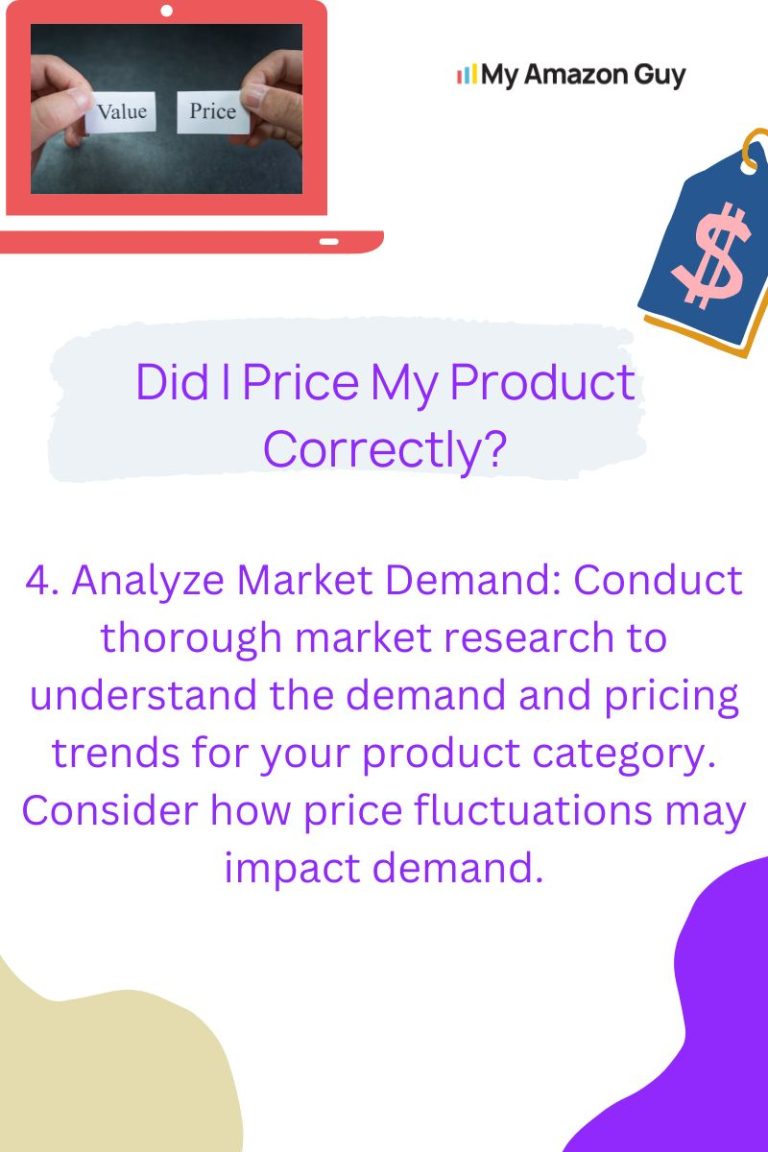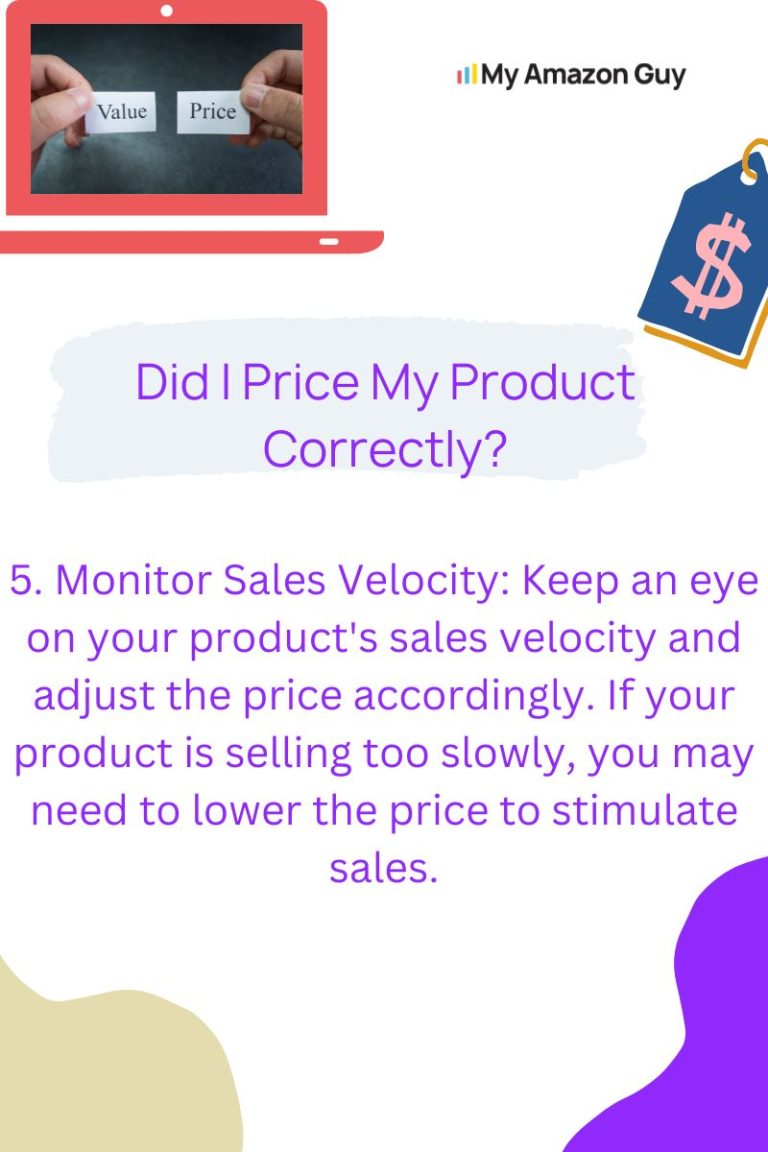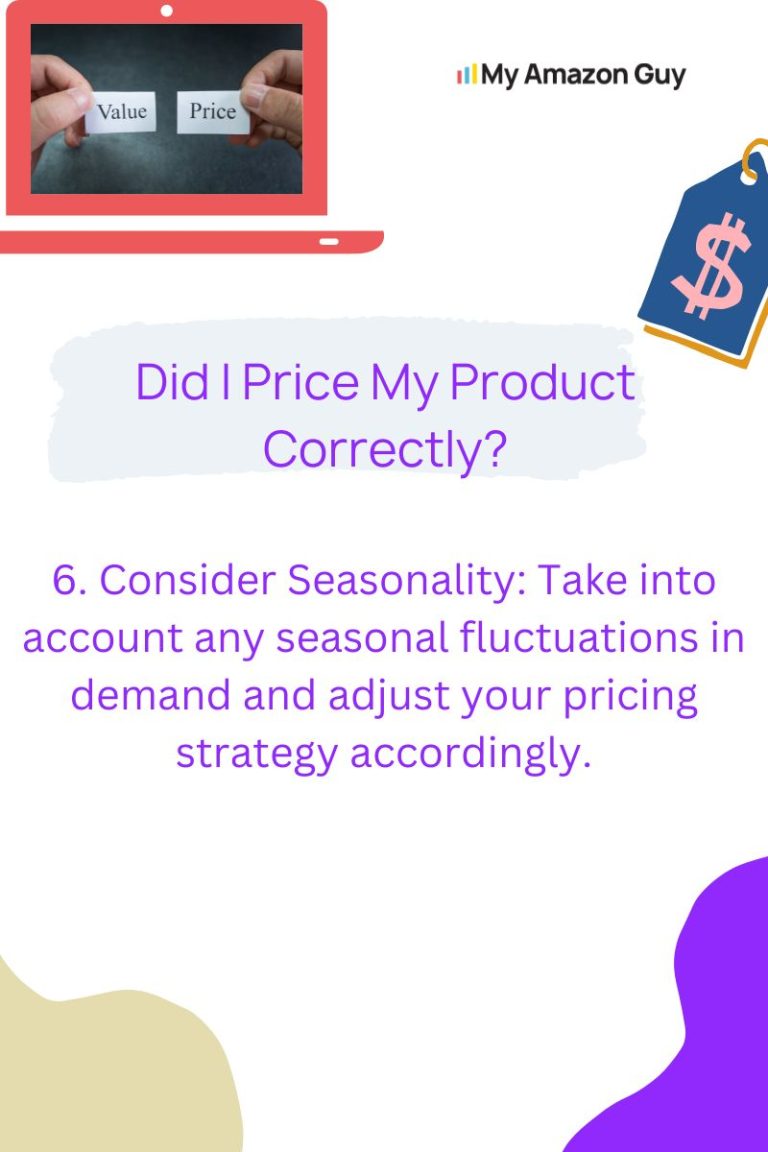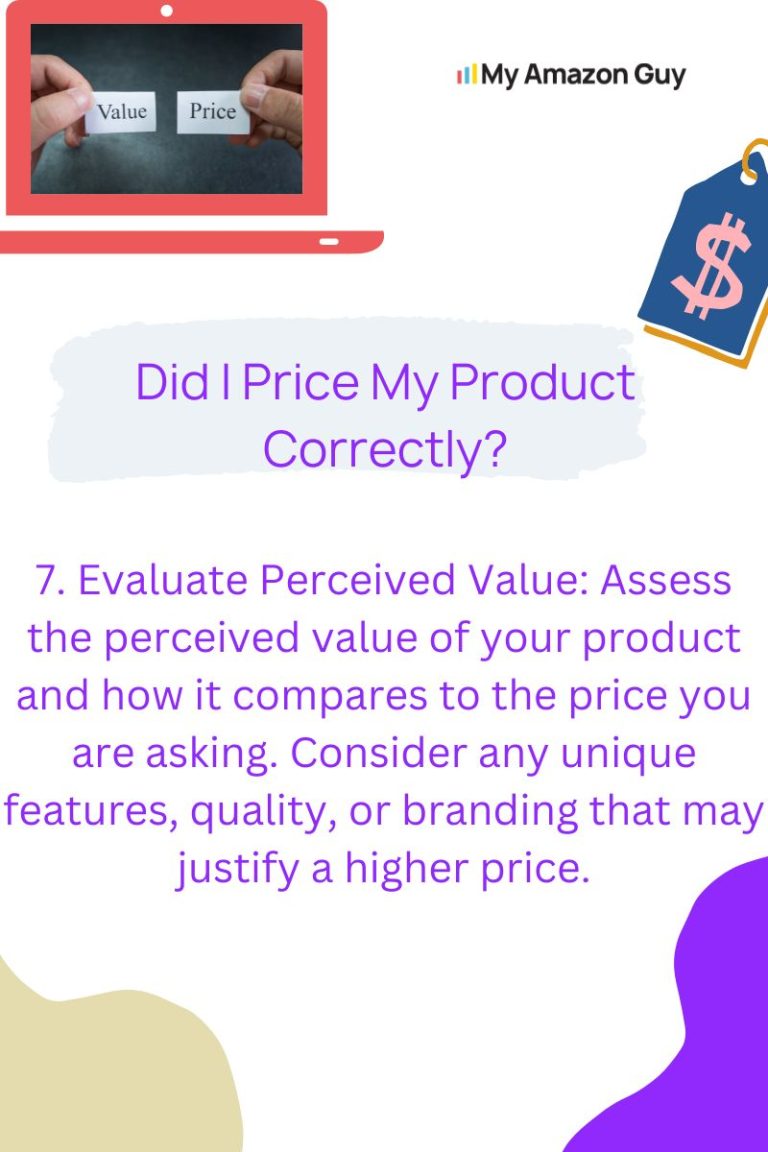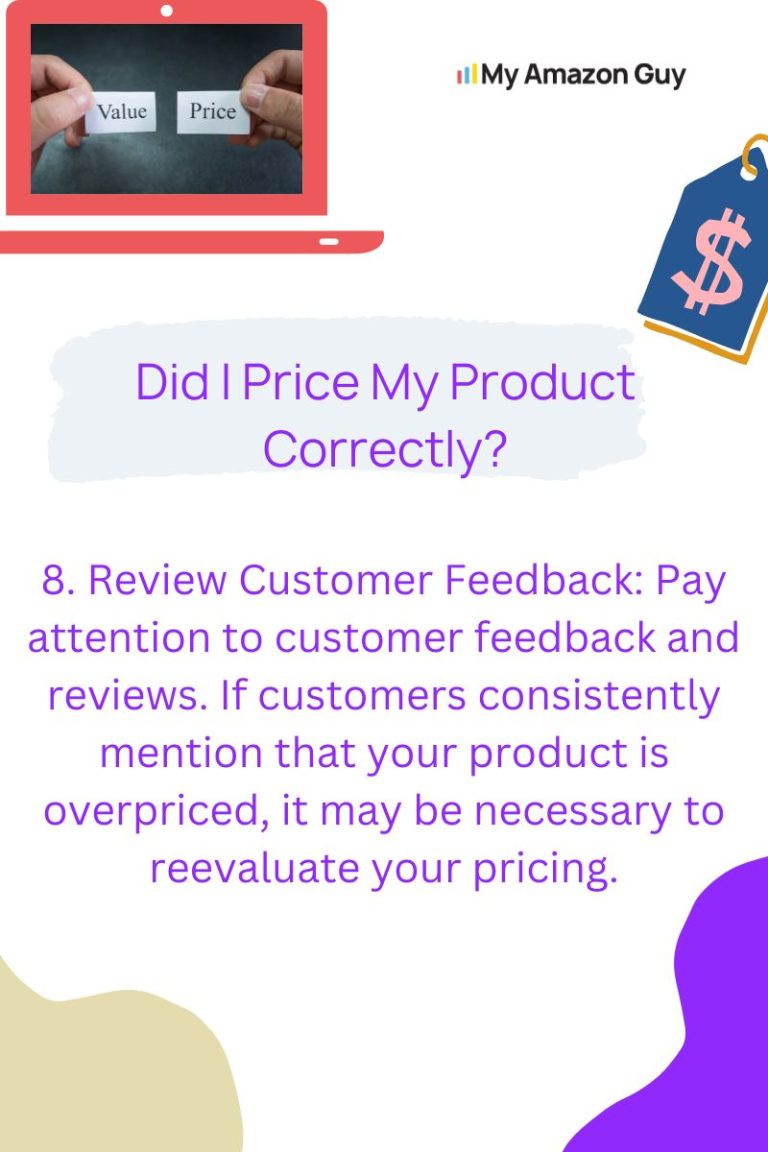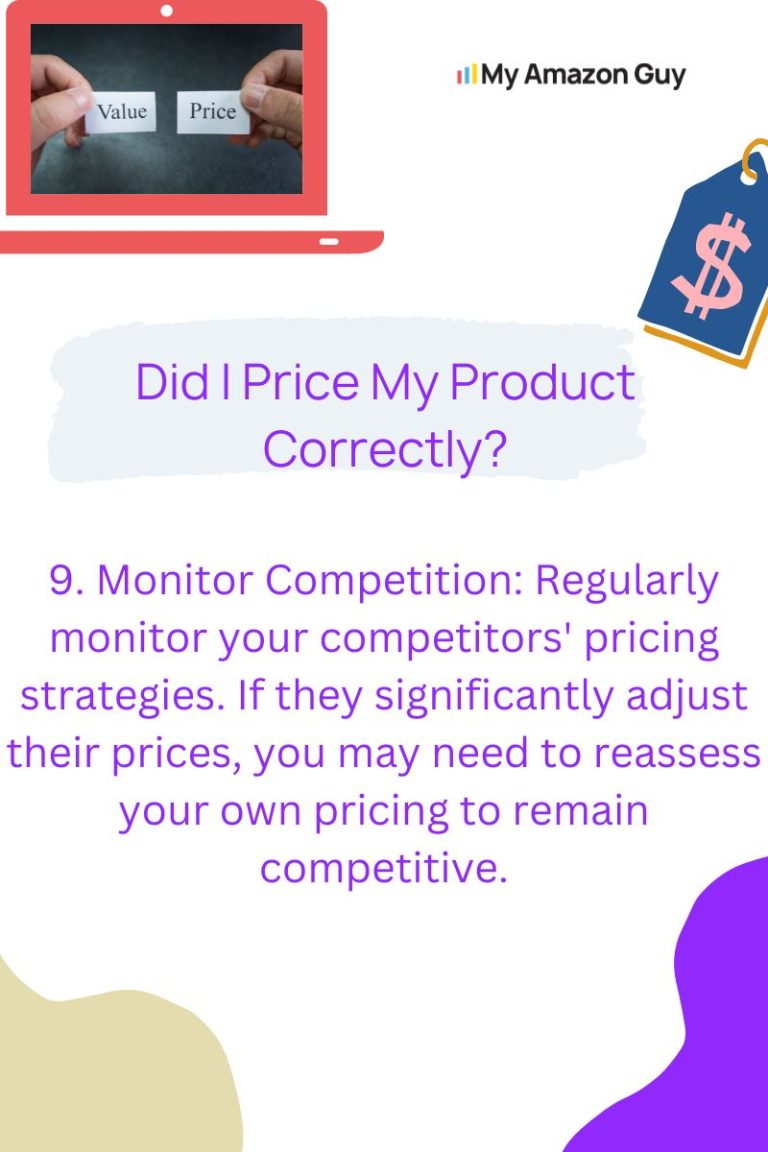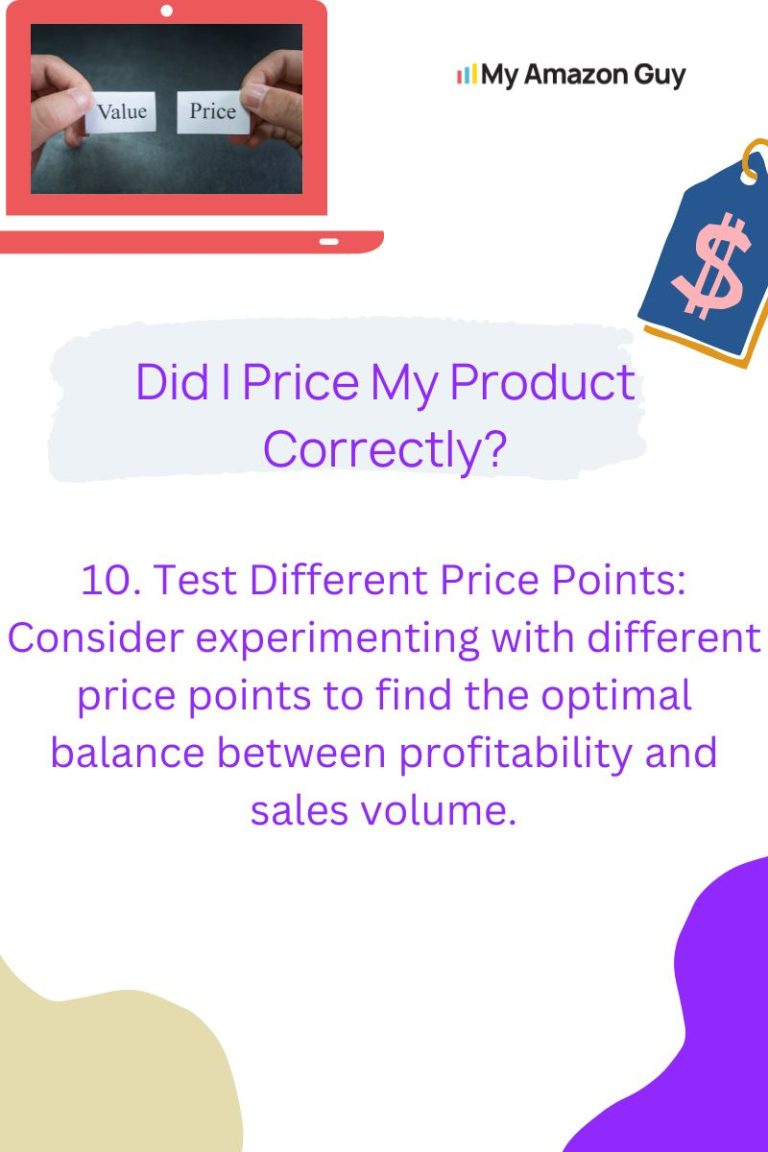As a seller, understanding Amazon FBA pricing and fees is crucial for determining the profitability of your venture. In this blog post, we will address frequently asked questions about the costs of using FBA, including fulfillment fees, storage fees, and other pricing considerations.
Keep reading until the end where a bonus content awaits you!
Amazon FBA Pricing and Fees: Is Amazon FBA Paid?
When it comes to Amazon FBA, it’s important to recognize that there are costs involved. Let’s break down the various expenses associated with using FBA and help you understand how they impact your business’s profitability.
Watch Steven Pope, founder of My Amazon Guy, as he explains how to calculate Amazon seller fees in this video:
Amazon FBA Pricing and Fees: Fulfillment Fees
The FBA fulfillment fee is a per-unit cost levied to fulfill items purchased from the Amazon store to customers. The fee is determined by the type, size, and weight of the item. It is also known as the “pick and pack” cost.
Details, computations, and prices for this fee may differ for products enrolled in FBA Small and Light or Multi-Channel fulfillment.
Fee Details
Time of charge – This is the time of order shipment to the buyer’s address.
Fee Structure – Per completed unit. The rate is determined by the product category, size tier, and delivery weight.
Values In The Fee Calculation
- Product size tier – Product size tiers categorize items based on their actual weight, dimensions, and dimensional weight. You can determine your product’s size tier or view size tier information for previously fulfilled products using the Monthly Storage Fees report.
- Shipping weight – Shipping weight is determined by the item’s unit weight or dimensional weight and is used to calculate fees. Shipping weight is based on unit weight or dimensional weight, whichever is greater, depending on size tier.
- Dimensional weight – Dimensional weight may be used instead of unit weight for shipping weight in certain situations. Calculate dimensional weight by multiplying package dimensions (length, width, height) and dividing by 139.
- Fee category – Fee categories determine rates for certain fee types on a specific product.
Strategies to minimize fulfillment costs
There are several strategies that can help minimize fulfillment costs on e-commerce platforms like Amazon. Here are a few tips:
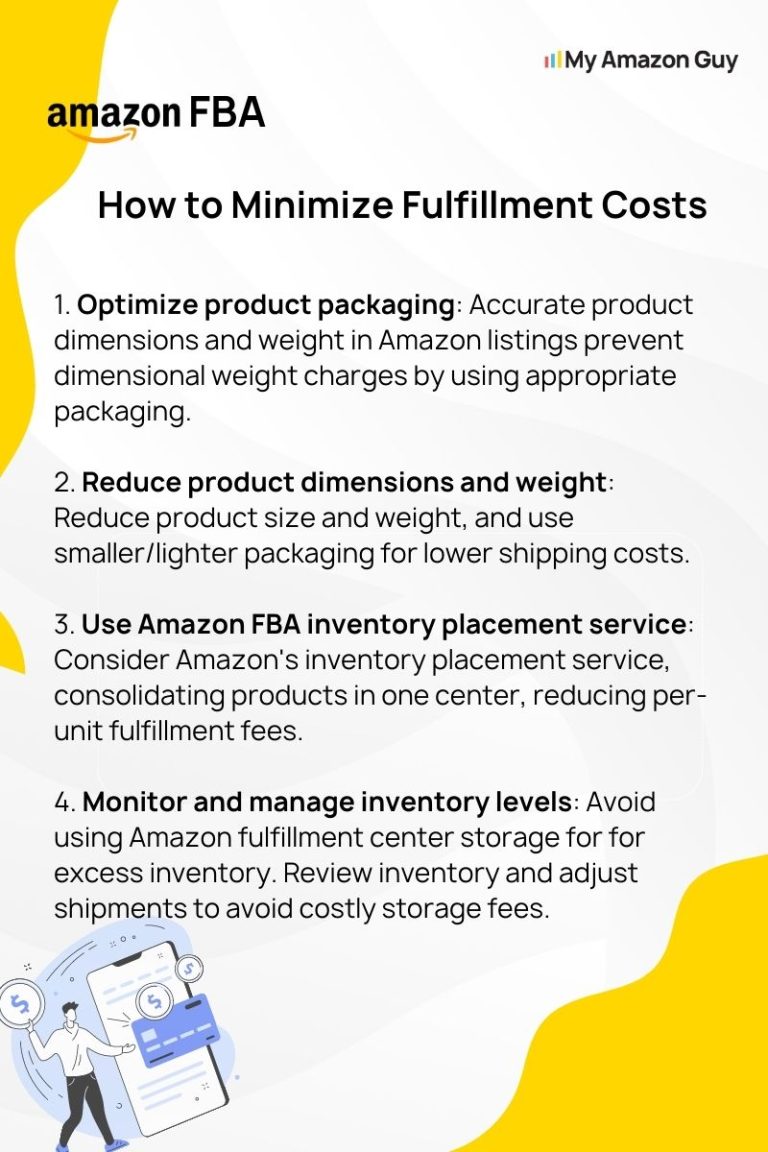
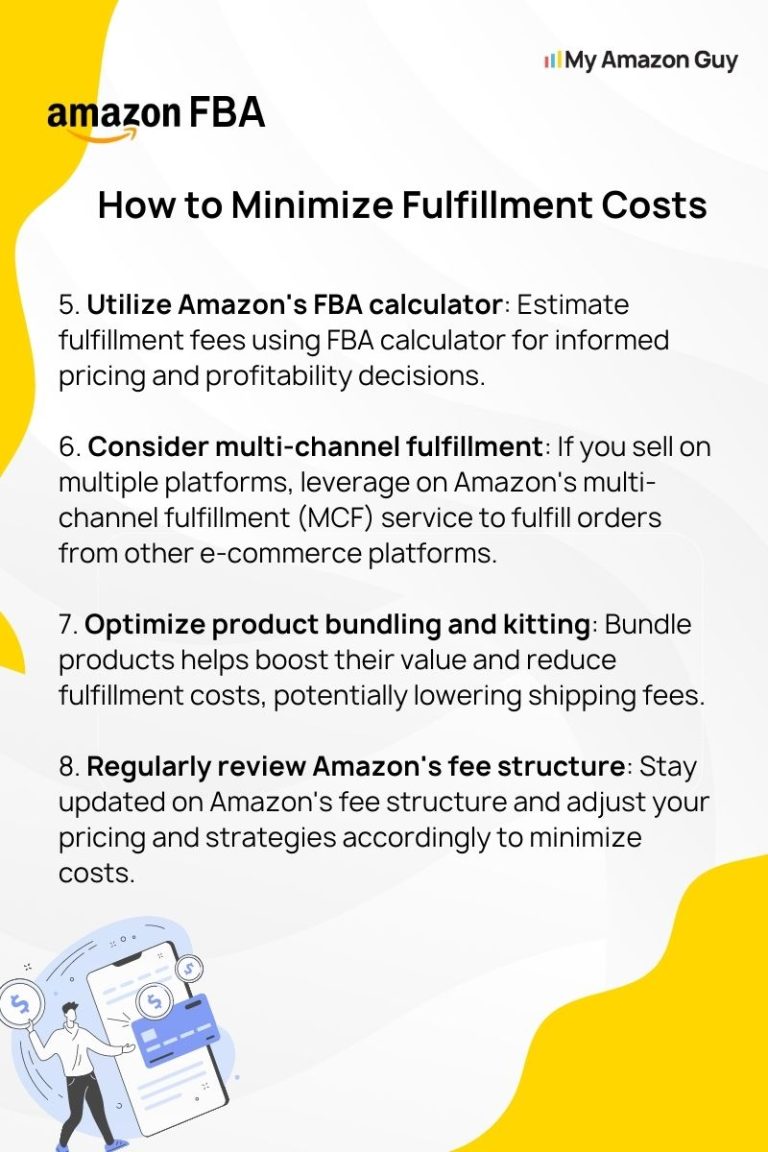
Amazon FBA Pricing and Fees: Storage Fees
Amazon FBA storage fees are calculated based on the amount of space your products occupy in Amazon’s fulfillment centers over time. These fees are typically charged on a monthly basis and are determined by two factors:
- The volume of your inventory is measured in cubic feet and is calculated based on the unit dimensions provided for each of your products in Seller Central. Amazon will measure the height, width, and length of each unit and multiply them together to determine the total volume.
- The time your inventory remains in storage is measured in months. Amazon assesses monthly storage fees based on the average volume of inventory you have in their fulfillment centers throughout the month.
Practical Ways To Optimize Inventory Management For Reduced Storage Costs
To optimize Amazon FBA inventory management for reduced storage costs, consider implementing the following practical strategies:
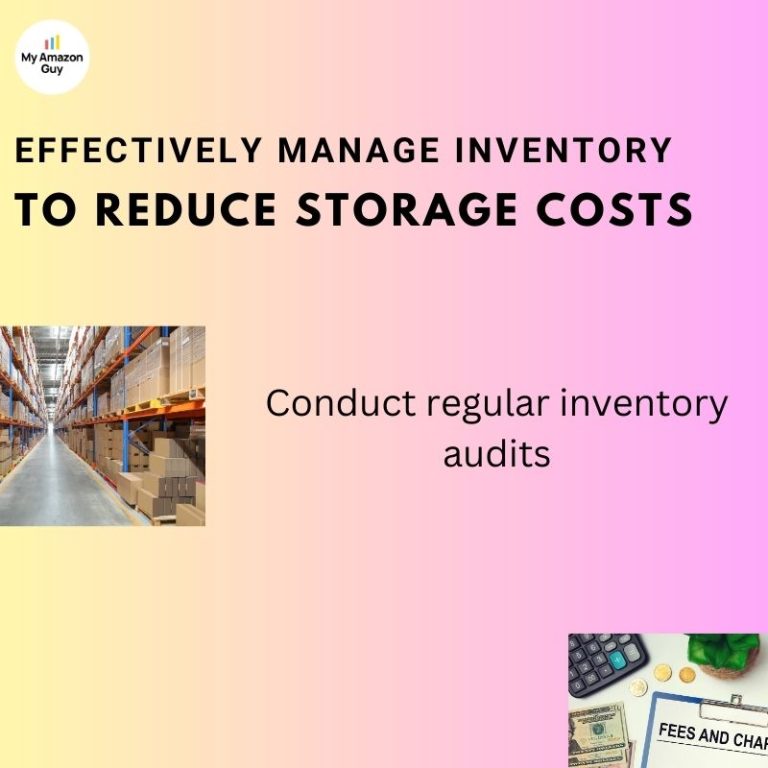
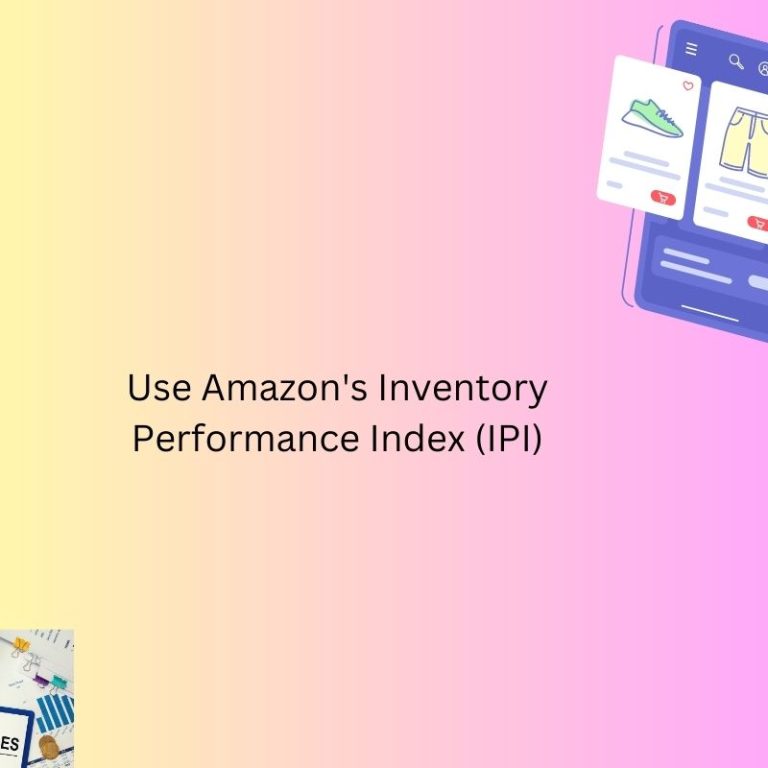
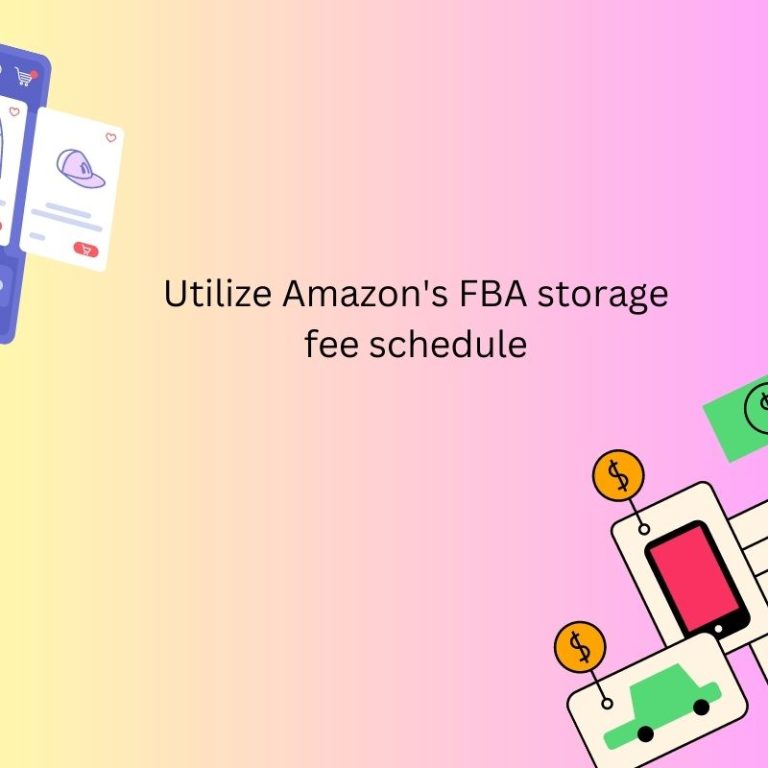
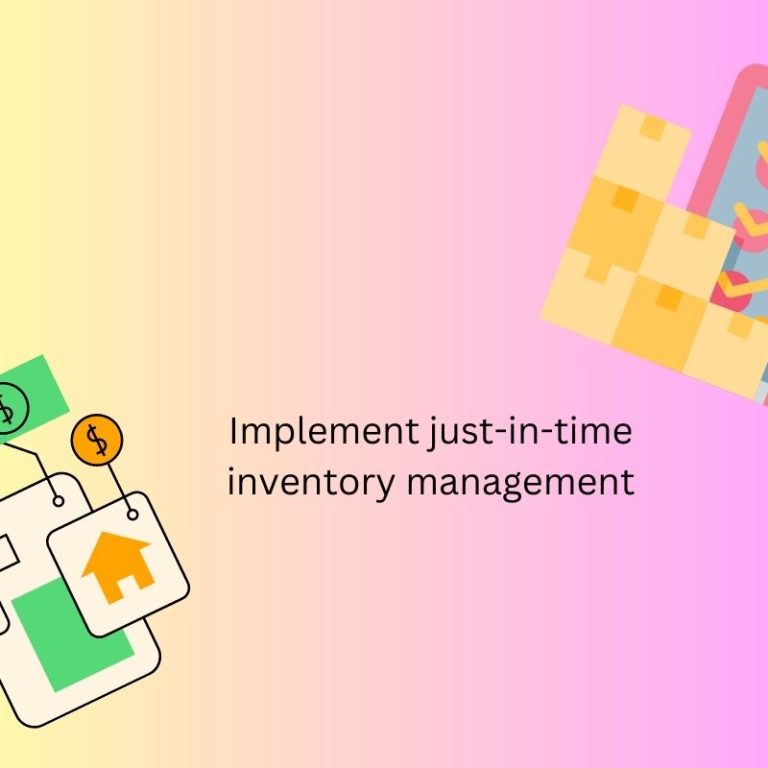
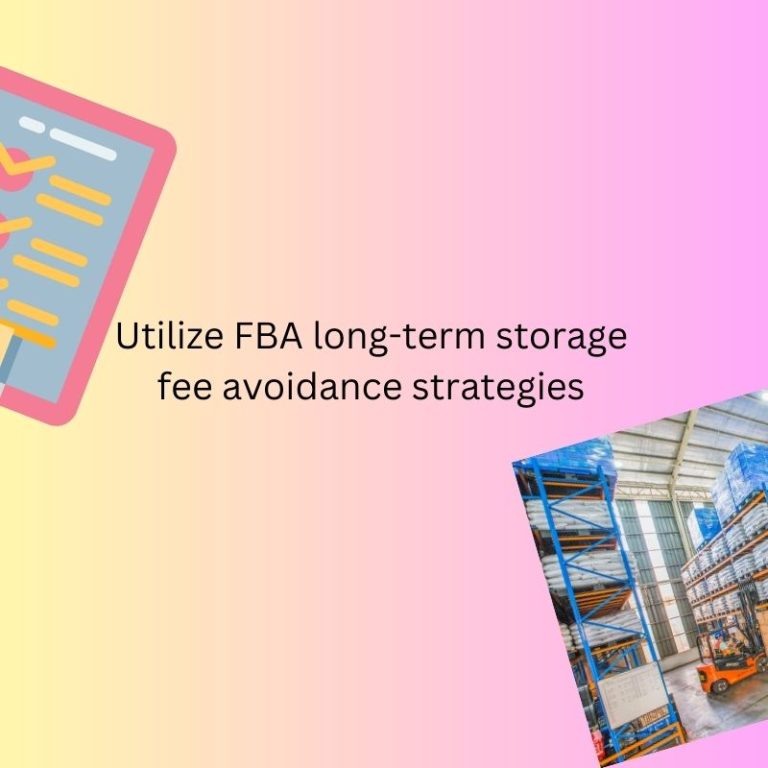
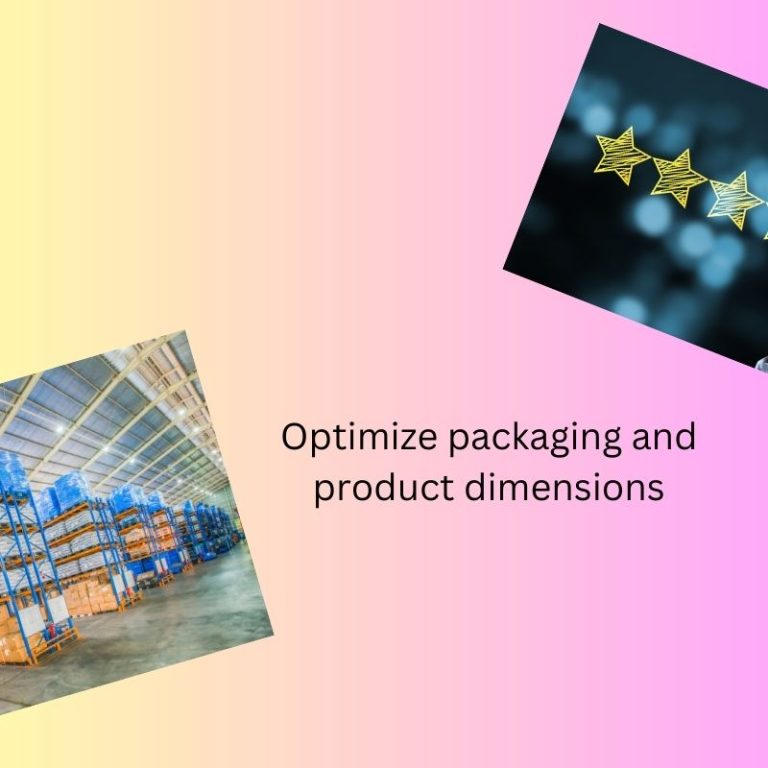
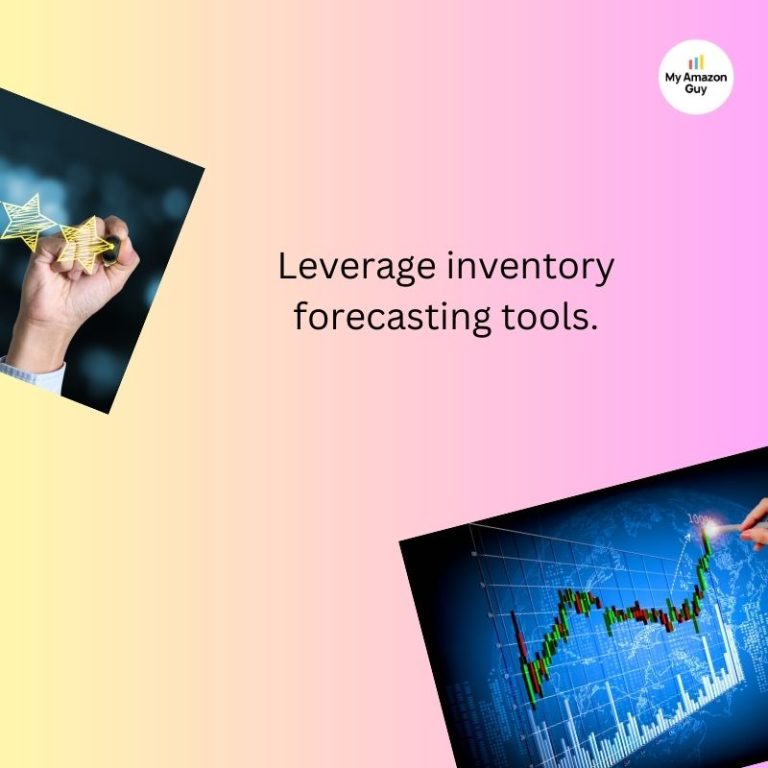
- Conduct regular inventory audits: Perform routine checks to identify slow-moving or stagnant inventory. By identifying these items, you can make informed decisions about whether to liquidate, discount, or remove them from FBA storage to avoid long-term storage fees.
- Use Amazon’s Inventory Performance Index (IPI): Amazon’s IPI is a metric that evaluates your inventory management performance. Aim to maintain an IPI score of 450 or higher to avoid overstocking and excess storage fees. Focus on improving your IPI by regularly monitoring it and taking necessary actions, such as increasing sales or removing slow-moving inventory.
- Utilize Amazon’s FBA storage fee schedule: Familiarize yourself with Amazon’s FBA storage fee schedule, which provides information on the monthly storage fees based on the time of the year. By understanding the fee structure, you can plan your inventory levels accordingly, avoiding unnecessary storage costs during peak seasons.
- Implement just-in-time inventory management: Adopting a just-in-time inventory strategy can help minimize storage costs. By keeping inventory levels lean and replenishing stock as needed, you can reduce the amount of time products spend in FBA storage, thereby decreasing storage fees.
- Utilize FBA long-term storage fee avoidance strategies: Amazon charges additional fees for inventory stored in their fulfillment centers for an extended period. To avoid these long-term storage fees, consider tactics such as offering promotions, utilizing FBA removal orders for slow-moving items, or adjusting your inventory levels based on demand.
- Optimize packaging and product dimensions: Efficiently using packaging space can help maximize storage capacity. Consider using compact packaging materials and optimizing product dimensions to minimize wasted space and reduce storage costs.
- Leverage inventory forecasting tools: Utilize inventory forecasting tools to better predict demand and adjust inventory levels accordingly. By accurately estimating sales, you can avoid overstocking, reduce storage costs, and ensure products are available when customers need them.
Amazon FBA Pricing and Fees: Multi-channel Fulfillment Fees
Amazon MCF is a 3PL service that uses Amazon’s fulfillment network to handle orders from various e-commerce channels. When using Amazon FBA service to fulfill orders from non-Amazon sales channels, the pricing structure typically consists of the following components:
- Fulfillment Fees: These fees cover the costs associated with picking, packing, and shipping your products. They vary based on the size and weight of the item, as well as the fulfillment service level (Standard, Oversize, or Special Handling).
You can find detailed information about these fees on Amazon’s FBA Pricing page.
- Storage Fees: If your inventory is stored in Amazon’s fulfillment centers, you may incur storage fees based on the volume of space your products occupy. These fees are typically charged monthly and are calculated based on the size and time of storage.
It’s important to manage your inventory effectively to avoid excessive storage fees.
- Additional Services: Amazon offers additional services that may incur separate fees. These services include labeling, polybagging, removal orders, and more. The fees for these services depend on the specific requirements of your product and the service you choose.
Here’s another video from Steven where he demonstrates how to complete a Multi-channel Fulfillment Order.
Pros And Cons Of Using FBA For Multi-Channel Fulfillment
Benefits of using FBA for multi-channel fulfillment:
- Prime eligibility: By utilizing FBA, your products become eligible for Amazon Prime, which can attract more customers and potentially increase sales. Prime members can enjoy fast and free shipping, enhancing the overall customer experience.
- Fulfillment expertise: Amazon has a vast and efficient fulfillment network, allowing you to leverage their expertise in order fulfillment and logistics. This can save you time and resources in managing your own fulfillment operations.
- Order accuracy and customer service: FBA takes care of picking, packing, and shipping orders, ensuring accuracy and timely delivery. Amazon’s customer service team also handles customer inquiries and returns, easing the burden on your own customer support.
- Scalability and flexibility: FBA allows you to scale your business quickly by leveraging Amazon’s extensive fulfillment infrastructure. You can easily expand into new markets and handle increased order volumes without worrying about capacity constraints.
Drawbacks of using FBA for multi-channel fulfillment:
- Cost: While FBA provides convenience, it comes with fulfillment fees, storage fees, and other associated costs. These fees can vary depending on factors such as product size, weight, and storage duration. It’s crucial to carefully evaluate the cost implications and ensure that the benefits outweigh the expenses.
- Limited control: When using FBA for multi-channel fulfillment, you may have less control over certain aspects of the fulfillment process. This includes packaging, branding, and the overall customer experience. Additionally, FBA may have different inventory requirements and restrictions compared to your other sales channels.
- Inventory management challenges: Coordinating inventory across multiple sales channels can be complex. It’s essential to have robust inventory management systems and processes in place to ensure accurate stock levels and prevent overselling or stockouts.
- Channel diversification limitations: While FBA allows you to fulfill orders from multiple sales channels, it is primarily designed for Amazon orders. Some features and benefits, such as Prime eligibility, may only apply to Amazon sales. If you primarily sell on non-Amazon channels, it’s important to assess whether FBA aligns with your specific needs and requirements.
Amazon FBA Pricing and Fees: International FBA Fees
Additional costs and considerations when using FBA for international marketplaces
- Shipping and Import Costs: Selling internationally through FBA may involve additional shipping and import fees. These costs can vary based on factors such as the destination country, shipping method (air, sea, etc.), and the size and weight of the product. It’s important to consider these costs when pricing your products and assessing their profitability in international markets.
- Customs and Import Regulations: Each country has its own customs and import regulations, which may include specific requirements for labeling, product documentation, and compliance with local standards or certifications. It’s important to research and understand these regulations to ensure smooth customs clearance and avoid any potential delays or penalties.
- Local Tax Obligations: Selling internationally may also require you to comply with local tax obligations, such as VAT (Value Added Tax) or GST (Goods and Services Tax). The tax rates and requirements can vary by country, and it’s important to understand and factor in these costs when selling in international marketplaces.
- Currency Exchange and Conversion: When selling internationally, you may need to consider currency exchange and conversion fees when converting your sales proceeds from the local currency to your preferred currency. These fees can vary depending on the marketplace and the currency exchange provider used by Amazon.
- Customer Support and Communication: Selling internationally may require additional customer support and communication efforts to cater to customers in different time zones and languages. It’s important to have strategies in place to handle inquiries, provide localized support, and address any language or cultural barriers.
- Market Research and Localization: Each international marketplace has its own unique characteristics, competition, and customer preferences. Conducting thorough market research and tailoring your product listings, keywords, and marketing strategies to each marketplace can help maximize your success and sales potential.
In this video, Steven and My Amazon Guy’s VP of Marketing, Kevin Sanderson discuss about creating one’s international selling empire.
Benefits of using FBA for global expansion
- Global Fulfillment Network: FBA provides access to Amazon’s extensive global fulfillment network, allowing sellers to store their inventory in multiple countries. This enables faster and more cost-effective shipping to customers around the world.
- Prime Eligibility: By using FBA, sellers can make their products eligible for Amazon Prime in international marketplaces. Prime membership offers benefits such as fast and free shipping, which can attract more customers and increase sales.
- Multilingual Customer Support: FBA provides customer support in multiple languages, allowing sellers to provide localized assistance to customers in different countries. This helps enhance the overall customer experience and build trust with international customers.
- Simplified Logistics: FBA takes care of the entire fulfillment process, including picking, packing, and shipping orders. This simplifies logistics for sellers, as they don’t have to manage their own international shipping and customs clearance processes.
- Trusted Brand: Selling through FBA can help establish trust with international customers. Amazon’s reputation for reliable and efficient fulfillment can enhance the perceived credibility of sellers and their products in new markets.
- Easy Market Entry: FBA makes it relatively easy for sellers to enter new international markets. Sellers can leverage Amazon’s existing infrastructure, marketplace presence, and customer base, allowing for a smoother market entry compared to establishing their own fulfillment operations.
- Global Selling Tools: Amazon provides various tools and resources to help sellers expand globally. This includes features such as the Global Selling Dashboard, which provides insights into international sales performance, and translation services to help optimize product listings for different languages.
- Enhanced Visibility: Selling through FBA can increase the visibility of products on Amazon’s global marketplaces. FBA products often receive higher search rankings and may be eligible for additional promotional opportunities, leading to increased exposure and potential sales.
Amazon FBA Pricing and Fees: Removal and Disposal Fees
Costs associated with removing or disposing of unsold or damaged inventory
- Removal Fees: If you choose to remove your unsold or damaged inventory from Amazon’s fulfillment centers, you will incur removal fees. These fees vary depending on factors such as the size and weight of the items and the time of year. You can refer to Amazon’s FBA fee schedule for specific details on removal fees.
- Disposal Fees: If you decide to dispose of your unsold or damaged inventory instead of having it returned to you, Amazon will charge disposal fees. These fees cover the cost of handling and disposing of the inventory and can vary based on the category and size of the items.
- Return Fees: If you opt to have your unsold or damaged inventory returned to you, you may incur return fees. These fees cover the cost of shipping the inventory back to you and can vary based on factors such as the size and weight of the items.
Strategies To Minimize Removal And Disposal Fees
To minimize removal and disposal fees for unsold or damaged inventory in Amazon’s FBA program, you can consider the following strategies:
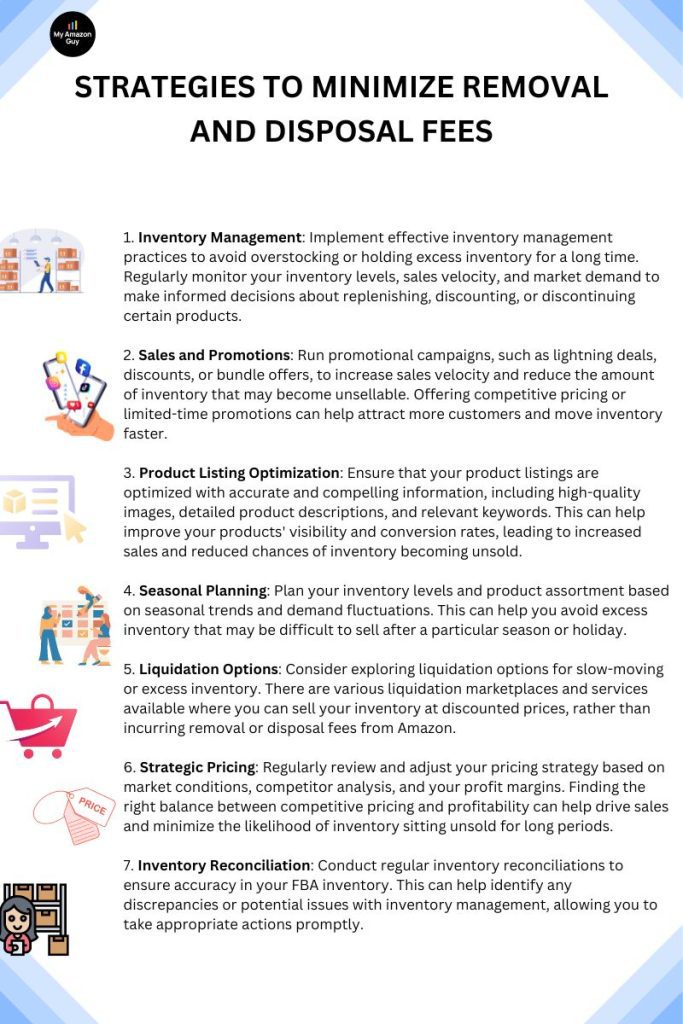
Amazon FBA Pricing and Fees: Long-term Storage Fees

Implications of keeping slow-moving inventory in Amazon's warehouses
Keeping slow-moving inventory in Amazon’s warehouses can have several implications for your business, such as:
- Storage Fees: Amazon charges storage fees for inventory that remains in their fulfillment centers for an extended period. Slow-moving inventory can result in higher storage fees over time, especially if it occupies a significant amount of space. It’s important to factor in these ongoing costs when evaluating the profitability of keeping slow-moving inventory in Amazon’s warehouses.
- Tie-up of Capital: Slow-moving inventory ties up capital that could be invested in other areas of your business. This can limit your ability to invest in new products, marketing campaigns, or other growth initiatives. It’s crucial to assess the opportunity cost of keeping slow-moving inventory and determine if reallocating capital to more profitable products or ventures would yield better returns.
- Opportunity Loss: Slow-moving inventory takes up valuable space that could be used for faster-selling products. By keeping slow-moving inventory in Amazon’s warehouses, you may miss out on the opportunity to stock and sell products that have higher demand and faster turnover rates. This can impact your overall sales and profitability.
- Market Saturation and Obsolescence: If slow-moving inventory comprises outdated or seasonal products, the longer it remains in Amazon’s warehouses, the higher the risk of market saturation or obsolescence. Consumer preferences and trends can change quickly, and holding onto slow-moving inventory for too long can result in a loss of relevance or reduced market demand.
- Impact on Performance Metrics: Slow-moving inventory can negatively impact your seller performance metrics. For example, it can lead to increased storage limits, which may limit your ability to send in new inventory or receive stock from suppliers. Additionally, slow sales velocity can impact your product rankings and visibility on Amazon, making it harder to generate organic sales.
- Unsold Inventory Costs: If slow-moving inventory ultimately remains unsold, you may incur additional costs for removal or disposal. These costs can further erode your profitability and tie up resources that could be allocated to more successful products or marketing efforts.
Long-Term And Seasonal Storage Fee Considerations
Long-term storage fees: Amazon charges long-term storage fees for inventory that has been stored in their fulfillment centers for an extended period of time.
As of September 2020, these fees are assessed on a monthly basis for units that have been in storage for more than 365 days. It’s essential to monitor your inventory levels and sell-through rates to minimize the risk of incurring these fees.
Regularly review your inventory and consider strategies such as price adjustments, promotions, or liquidation to prevent excessive long-term storage.
Seasonal storage fees: Amazon may also charge seasonal storage fees for certain products during peak selling seasons.
These fees typically apply to products that are deemed to be in high demand during specific times of the year, such as holiday-related items.
It’s crucial to plan your inventory accordingly and optimize your storage space during these peak periods to avoid or minimize these additional fees.
To avoid or minimize both long-term and seasonal storage fees, consider the following strategies:
– Accurate demand forecasting: Use historical sales data and market trends to forecast demand and adjust your inventory levels accordingly. This helps prevent overstocking and reduces the risk of incurring long-term storage fees.
– Inventory optimization: Regularly review your product catalog and identify slow-moving or low-demand items. Consider adjusting prices, running promotions, or liquidating these products to free up storage space and minimize long-term storage fees.
– Seasonal inventory planning: Analyze historical sales patterns and anticipate peak selling seasons. Adjust your inventory levels accordingly to optimize storage space and reduce the risk of incurring seasonal storage fees.
– Utilize FBA inventory placement options: Amazon offers inventory placement services where you can choose to have your products stored in a single fulfillment center or distributed across multiple centers. Evaluating the most cost-effective option based on your product’s characteristics and sales volume can help minimize storage fees.
Amazon FBA Pricing and Fees: Referral Fees
FBA referral fees are fees charged by Amazon to sellers for each item sold through the FBA program. These fees are calculated as a percentage of the item’s sale price and vary depending on the product category.
The impact of FBA referral fees on pricing and profitability can be significant. Here are some key considerations:
- Pricing Strategy: FBA referral fees should be taken into account when setting the selling price for your products. If the fees are high, you may need to factor them into your pricing calculations to ensure you maintain a desirable profit margin. Failing to consider these fees could result in pricing your products too low, leading to reduced profitability.
- Competitiveness: FBA referral fees can impact your ability to compete with other sellers on Amazon. If your product’s selling price is significantly higher than competitors due to higher FBA referral fees, it may be challenging to attract customers. It’s important to strike a balance between pricing competitively and maintaining profitability after considering the fees.
- Profit Margin: FBA referral fees directly impact your profit margin on each item sold. Higher referral fees can eat into your profit margin, especially if you have slim margins to begin with. It’s crucial to analyze your cost of goods sold, other expenses, and the impact of referral fees to ensure your products remain profitable.
- Product Selection: When evaluating potential products to sell on Amazon, it’s important to consider the FBA referral fees associated with each category. Choosing products with lower referral fees can help improve your profitability, as you’ll have more room to set competitive prices and maintain a healthy profit margin.
- Impact on Pricing Flexibility: Higher FBA referral fees can limit your flexibility in adjusting prices in response to market conditions or changes in the competitive landscape. If your profit margin is already tight due to referral fees, it may be challenging to lower prices to attract customers or increase prices to maximize profitability.
- Bulk and Oversized Items: FBA referral fees for bulk or oversized items are typically higher than standard-sized items. It’s important to consider these higher fees when selling such products, as they can significantly impact your pricing and profitability calculations.
Referral fee rates for different product categories
Amazon deducts the applicable referral fee % calculated on the total sales price from all products, excluding any taxes calculated using Amazon tax calculation services. The total sales price is the total amount paid by the buyer, which includes the item price as well as any delivery or gift wrapping fees. The referral fee varies depending on the category.
Strategies to optimize pricing and manage referral fees effectively
To optimize pricing and manage referral fees effectively on Amazon, here are some strategies you can consider:
- Competitive Research: Conduct thorough research to understand the pricing landscape for your products. Analyze the prices of similar products from competitors to gain insights into the market and determine a competitive pricing strategy. Consider factors such as product quality, features, and customer reviews when setting prices.
- Calculate Total Costs: Calculate all the costs associated with selling your products on Amazon, including FBA referral fees, fulfillment fees, storage fees, and any other relevant expenses. By understanding the total costs, you can determine the minimum selling price required to maintain profitability.
- Monitor and Adjust Prices: Continuously monitor your product performance, market conditions, and competitor pricing. Utilize Amazon’s pricing tools or third-party software to automate price adjustments based on predetermined rules or real-time market data. Regularly review and adjust your prices to maintain competitiveness while maximizing profitability.
- Utilize Dynamic Pricing: Consider implementing dynamic pricing strategies, especially for products with high competition or fluctuating demand. Dynamic pricing allows you to adjust prices in response to factors such as competitor prices, inventory levels, sales velocity, or time of day. This can help you stay competitive and maximize sales and profits.
- Test Different Price Points: Experiment with different price points to find the optimal balance between sales volume and profitability. Test different pricing strategies such as offering discounts, bundling, or tiered pricing to gauge customer response and identify the most effective pricing approach for your products.
- Leverage Promotions and Marketing Campaigns: Utilize Amazon’s promotional tools, such as Lightning Deals, Coupons, or Sponsored Products, to attract customers and increase visibility. Strategic use of promotions and marketing campaigns can help drive sales, boost your product rankings, and offset the impact of referral fees with increased sales volume.
- Optimize Product Listings: Invest time in optimizing your product listings to enhance their visibility and conversion rates. Use compelling product titles, high-quality images, detailed descriptions, and relevant keywords to improve your product’s searchability and appeal to potential customers. A well-optimized listing can positively impact sales, allowing you to absorb referral fees more effectively.
- Minimize Returns and Negative Feedback: Provide accurate product information, excellent customer service, and prompt order fulfillment to minimize returns and negative feedback. High return rates or negative feedback can impact your seller performance metrics, potentially leading to increased referral fees. Prioritizing customer satisfaction can help maintain a healthy seller account and mitigate the impact of fees.
Amazon FBA Pricing and Fees: Advertising Fees
Overview of advertising options on Amazon and associated costs
Amazon offers several advertising options to help sellers promote their products and increase visibility. Here’s an overview of the main advertising options on Amazon and their associated costs:
- Sponsored Products: Sponsored Products are keyword-targeted ads that appear within the search results and on product detail pages. Sellers bid on keywords to have their products displayed when shoppers search for those terms. The cost for Sponsored Products is based on a pay-per-click (PPC) model, where you only pay when a shopper clicks on your ad. The cost per click (CPC) varies depending on the competitiveness of the keyword and the bid you set.
- Sponsored Brands: Sponsored Brands (formerly known as Headline Search Ads) are banner ads that feature a custom headline, logo, and multiple products. They appear at the top of search results and help drive brand awareness. Like Sponsored Products, Sponsored Brands operate on a PPC model, and the cost per click varies based on bidding and competition.
- Sponsored Display: Sponsored Display ads allow sellers to promote their products both on and off Amazon. These ads can appear on product detail pages, customer review pages, and even on external websites and apps. Sponsored Display ads are also priced on a PPC basis.
- Amazon DSP: Amazon Demand-Side Platform (DSP) offers advanced advertising capabilities, allowing sellers to reach audiences both on and off Amazon. DSP provides access to display ads, video ads, and audio ads. However, Amazon DSP typically requires a minimum spend commitment, making it more suitable for larger advertisers.
- Stores: Amazon Stores allow sellers to create their own customizable brand storefronts on Amazon. This helps showcase their products, tell their brand story, and enhance the overall shopping experience. Creating an Amazon Store is free, but sellers should consider the costs associated with designing and maintaining the storefront.
Impact of advertising fees on profitability
- Advertising Cost vs. Return on Investment (ROI): It’s essential to evaluate the effectiveness of your advertising campaigns and the resulting return on investment. If the advertising fees generate a significant increase in sales and profitability, the impact on overall profitability may be positive. However, if the advertising costs outweigh the generated sales and do not produce a satisfactory ROI, profitability may be negatively affected.
- Profit Margin: The profit margin of your products plays a crucial role in determining the impact of advertising fees on profitability. If your profit margin is already slim, the additional expenses from advertising fees may further erode your profitability. It’s important to carefully analyze your cost structure, including advertising expenses, to ensure your products remain profitable.
- Advertising Strategy and Targeting: The effectiveness of your advertising campaigns depends on your strategy and targeting. A well-planned and targeted advertising approach can lead to higher conversion rates, increased sales, and improved profitability. On the other hand, ineffective targeting or poorly executed campaigns can result in wasted advertising spend and minimal impact on profitability.
- Competition and Advertising Costs: The competitiveness of your product category on Amazon can affect the cost of advertising. If your category is highly competitive, the cost per click (CPC) for advertising may be higher, potentially impacting your profitability. It’s important to monitor and adjust your advertising strategy to ensure you are effectively competing while maintaining profitability.
- Advertising Optimization: Continuously monitoring and optimizing your advertising campaigns can help improve profitability. Analyze key metrics such as click-through rates (CTR), conversion rates, and advertising costs of sales (ACoS) to identify opportunities for optimization. Adjusting bidding strategies, refining keyword targeting, and improving ad creatives can help maximize the impact of your advertising spend on profitability.
- Long-Term Brand Building: While the immediate impact of advertising fees on profitability may be measurable, it’s essential to consider the long-term effects of brand building. Effective advertising can help establish brand recognition, loyalty, and customer trust, which can drive repeat purchases and long-term profitability beyond the immediate advertising ROI.
Strategies for managing advertising costs while maximizing results
To manage advertising costs while maximizing results, here are some strategies you can consider:
- Set Clear Advertising Goals: Define clear goals and objectives for your advertising campaigns. Whether it’s driving sales, increasing brand awareness, or launching new products, having specific goals will help you focus your efforts and allocate your advertising budget effectively.
- Targeted Keyword Research: Conduct thorough keyword research to identify relevant and high-converting keywords for your products. By targeting specific, relevant keywords, you can improve the efficiency of your advertising spend and reach customers who are more likely to convert.
- Optimize Ad Campaign Structure: Organize your advertising campaigns into well-structured ad groups and campaigns. This allows you to have better control and optimization over your ads. Grouping similar keywords, products, or target audiences together can help you tailor your ad messaging and bidding strategies for better performance.
- Continuously Monitor and Optimize: Regularly monitor the performance of your advertising campaigns and make data-driven optimizations. Analyze key metrics such as click-through rates (CTR), conversion rates, and advertising cost of sales (ACoS). Adjust bids, refine keyword targeting, and optimize ad creatives based on the data to improve campaign performance and reduce unnecessary costs.
- Use Negative Keywords: Utilize negative keywords to exclude irrelevant search terms that may trigger your ads. This helps to refine your targeting and ensure your ads are shown to the most relevant and qualified audience. By eliminating irrelevant clicks, you can reduce wasted advertising spend and improve your campaign’s efficiency.
- Bid Optimization: Continuously monitor and adjust your bidding strategy to strike the right balance between visibility and cost. Experiment with different bidding strategies such as manual bidding, automatic bidding, or bid modifiers to find the most effective approach for your campaigns. Consider adjusting bids based on factors like keyword performance, time of day, or device type to maximize results while managing costs.
- Utilize Ad Scheduling: Take advantage of ad scheduling to control when your ads are shown. Analyze your historical performance data to identify the most profitable time periods and focus your advertising budget during those high-converting times. By strategically scheduling your ads, you can optimize your advertising costs and improve your campaign’s efficiency.
- Test and Iterate: Continuously test different ad creatives, messaging, and targeting strategies to identify what resonates best with your target audience. A/B test different variations of your ads and landing pages to optimize your campaigns for better results. By constantly iterating and improving your advertising approach, you can find the most effective strategies while minimizing costs.
Amazon FBA Pricing and Fees: Pricing Strategies
When it comes to pricing strategy for Amazon FBA, there are several factors to consider. Here are some key points to keep in mind:
- Competitive Analysis: Research and analyze the pricing of similar products in your niche. This will give you an idea of the market price range and help you determine a competitive price point for your product.
- Cost Analysis: Calculate all the costs associated with your product, including manufacturing, shipping, Amazon FBA fees, and any other expenses. Make sure to factor in your desired profit margin as well.
- Value Proposition: Consider the unique features, quality, and benefits of your product compared to competitors. If your product offers more value or has a unique selling point, you might be able to justify a higher price.
- Dynamic Pricing: Amazon allows sellers to use dynamic pricing strategies, where prices can be adjusted based on factors like demand, competition, and seasonality. Automated repricing tools can help you stay competitive and maximize profits.
- Test and Monitor: Experiment with different price points to find the optimal balance between sales volume and profitability. Keep a close eye on your sales performance and adjust prices accordingly.
- Promotions and Discounts: Utilize Amazon’s promotional tools like Lightning Deals, Coupons, and Subscribe & Save to attract customers and boost sales. Offering limited-time discounts can also help drive traffic and convert potential customers.
Below is a video playlist of My Amazon Guy’s videos about pricing strategies:
How Do I Price My Products To Make My Amazon FBA Business Profitable?
To price your products for profitability in your Amazon FBA business, you can follow these general guidelines:
- Research Competitors: Conduct thorough research on your competitors’ pricing to understand the market and ensure your prices are competitive. Look for similar products and analyze their pricing strategies.
- Consider Costs: Calculate all the costs associated with your products, including manufacturing, shipping, Amazon fees, packaging, and any other expenses. Make sure to account for all these costs when setting your prices.
- Determine Profit Margin: Decide on the profit margin you want to achieve for each product. This will depend on your business goals and the level of competition in your niche.
- Use Amazon’s Tools: Take advantage of Amazon’s pricing tools and algorithms to optimize your pricing strategy. Utilize features like “Match Low Price” to automatically adjust your prices to match the lowest price on the marketplace.
- Track Sales and Adjust: Continuously monitor your sales performance and adjust your prices accordingly. If your products are selling well, you may consider increasing prices slightly to maximize profits. Conversely, if sales are slow, you may need to lower prices to attract more customers.
- Test Different Price Points: Experiment with different price points to find the sweet spot that maximizes both sales volume and profitability. You can use Amazon’s A/B testing or run promotions to gather data on customer response to different pricing strategies.
Remember, pricing is a dynamic process, and it’s important to regularly review and adjust your prices based on market conditions and business goals.
Amazon FBA Pricing and Fees: Cost Analysis and Profitability
Methods For Calculating The Profitability Of Using Fba For Your Business
To calculate the profitability of using Amazon’s FBA (Fulfillment by Amazon) for your business, you can consider the following methods:
- Calculate FBA Fees: Start by understanding the fees associated with using FBA. Amazon charges various fees, including fulfillment fees, storage fees, and referral fees. Fulfillment fees depend on factors such as product size, weight, and category. Storage fees are based on the amount of space your products occupy in Amazon’s fulfillment centers. Referral fees are a percentage of the product’s sale price. Calculate these fees for your products to get an accurate understanding of the cost of using FBA.
- Calculate COGS (Cost of Goods Sold): Determine the cost of producing or sourcing your products, including manufacturing costs, packaging, shipping to Amazon’s fulfillment centers, and any other related expenses. This will give you an idea of your Cost of Goods Sold (COGS) per unit.
- Calculate Gross Profit: Calculate the gross profit for each unit sold by subtracting the COGS from the selling price. This represents the profit before considering other expenses.
- Factor in Advertising Costs: If you are running advertising campaigns on Amazon, consider the advertising costs associated with promoting your FBA products. Deduct these costs from the gross profit to get a clearer picture of the net profit.
- Consider Other Expenses: Take into account any other business expenses, such as overhead costs, marketing expenses outside of Amazon, software subscriptions, and employee wages. Subtract these expenses from the gross profit to calculate the net profit.
- Analyze Sales Volume: Assess the sales volume of your FBA products. Higher sales volume can lead to economies of scale and better profitability as you spread fixed costs over more units sold. Consider the potential impact on profitability as sales volume increases or decreases.
- Evaluate Return on Investment (ROI): Calculate the return on investment for each product by dividing the net profit by the total investment (including product costs, FBA fees, and other expenses). This will help you gauge the profitability of using FBA for each product and make informed decisions about your product lineup.
- Track Performance Over Time: Continuously monitor and analyze your FBA profitability over time. Regularly review your financial statements, sales data, and expenses to identify trends, areas for improvement, and opportunities to increase profitability.
Amazon FBA Pricing and Fees: Is It Cheaper to Use FBA?
Yes, FBA fees on Amazon are generally cheaper compared to fulfilling orders yourself with FBM (Fulfilled by Merchant). With FBA, you pay fees for storage, picking, packing, and shipping your products.
However, these fees are often lower than the costs associated with fulfilling orders on your own, such as warehousing, labor, and shipping costs. Additionally, FBA offers the advantage of Prime eligibility, which can boost your sales.
It’s important to consider your specific product and sales volume to determine the most cost-effective fulfillment option for your business.
Conclusion
Understanding Amazon FBA pricing and fees is essential for making informed decisions about your fulfillment strategy. By breaking down the costs associated with FBA and comparing them to alternative methods, you can determine the best approach for your business.
Armed with this knowledge, you’ll be well-equipped to optimize your profitability on the Amazon platform.
Bonus: Checklist for Correct Pricing
Here is a checklist to help you determine if you have priced your Amazon FBA product appropriately:
